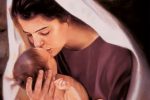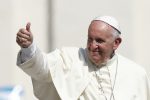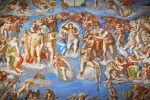The Truth About Miracles

Some of the greatest gifts God has given to the Church for evangelism are the gifts of miracles. As a Pentecostal before I became Catholic, I always believed God still performs miracles, but I never saw anything close to what Catholics too often take for granted in both the number and kind of miracles God pours out upon his One, Holy, Catholic, and Apostolic Church in every generation. Everything from the raising of the dead, to restorative miracles of the body and more have been experienced in the Church for 2,000 years fulfilling our Lord’s prophetic words of Mark 16:17-20:
“These signs shall follow those who believe”… And they went forth and preached everywhere, while the Lord worked with them and confirmed the message by the signs that attended it.
And yet, these miracles are too often the best kept secret in Catholicism. I am convinced that untold millions of souls would come to Christ in his Church if we as Catholics would simply inform them of these incredible gifts.
What is a Miracle?
The glossary of the Catechism of the Catholic Church gives an excellent definition of what constitutes a miracle:
A sign or wonder, such as a healing or the control of nature, which can only be attributed to divine power. The miracles of Jesus were messianic signs of the presence of God.
The key here is the notion that a true miracle “can only be attributed to divine power;” it cannot be explained by the action of created beings. Thus, when the Church investigates whether or not a particular phenomenon is miraculous all natural possibilities must first be eliminated. In fact, in its discernment process the Church will often use non-believing experts in pertinent areas, whether they are doctors when discerning a physical healing, or various scientists when examining some other material phenomena as we will see below, in order to avoid any possible bias in favor of demonstrating a miracle. If anything, the Church would prefer the investigating expert to have a bias against rather than in favor of demonstrating an authentic miracle. The principle involved here is simple. God does not need our help to communicate miracles. He is plenty able to do it all by himself and in a way that will be convincing to any and all who seek the truth honestly.
Why Miracles?
Vatican I, in session 3, The Dogmatic Constitution on the Catholic Faith, chapter 3, “On Faith,” declared:
Nevertheless, in order that the submission of our faith should be in accordance with reason, it was God’s will that there should be linked to the internal assistance of the Holy Spirit external indications of his revelation, that is to say divine acts, and first and foremost miracles and prophecies, which clearly demonstrating as they do the omnipotence and infinite knowledge of God, are the most certain signs of revelation and are suited to the understanding of all.
Moreover, in its accompanying canons, the Council fathers declared infallibly:
(Canon 3) If anyone says that divine revelation cannot be made credible by external signs, and that therefore men and women ought to be moved to faith only by each one’s internal experience or private inspiration: let him be anathema.
(Canon 4) If anyone says that all miracles are impossible, and that therefore all reports of them, even those contained in sacred scripture, are to be set aside as fables or myths; or that miracles can never be known with certainty, nor can the divine origin of the Christian religion be proved from them: let him be anathema.
It should be noted that God does not overwhelm us when it comes to miracles. God respects our freedom. Indeed, without freedom there is no true love as we understand it. Miracles are aids to those who honestly seek truth, never guns to the head forcing belief. For those who do not want to submit to God and his truth, there will always be ways to explain away miracles, even if these “explanations” range from the weak to the absurd. Jesus’ words in Luke 16:31 come to mind:
“If they do not hear Moses and the prophets, neither will they be convinced if someone should rise from the dead.”
This is not to dismiss the importance of miracles. Of course not! The Church has rightfully declared them to be “the most certain signs of revelation” and certain proofs of “the divine origin of the Christian religion” as we cited above. But it is a help for keeping things in perspective. Not everyone is going to be convinced because there is more to this thing than just being persuaded intellectually. The will sometimes gets in the way!
Eucharistic Miracles
1. In ca. AD 700, at the Monastery of St. Longinus, in Lanciano Italy, a priest-Monk whose name is unknown to us today was celebrating the Holy Eucharist. He had been struggling with his faith in the Real Presence when our Lord in his infinite mercy would deign to grant to this priest and to the world a miracle that even to this day continues to be visible proof of the truth of the Eucharist. Shortly after the consecration—after the bread and wine he offered had been transubstantiated into the body, blood, soul and divinity of Christ—the accidents of bread and wine he was then holding in his hands were transformed into real human flesh and real human blood.
Over the centuries there have been multiple occasions where the Church permitted this miracle to be examined, but perhaps the most thorough of these examinations took place in 1970, under the expert scrutiny of Dr. Odoardo Linoli, university professor-at-large in anatomy and pathological histology, and in chemistry and clinical microscopy, head physician of the United Hospitals of Arezzo, and Dr. Ruggero Bertelli, a professor emeritus of normal human anatomy at the University of Siena. The findings of this study were truly amazing:
• The flesh was proven to be the muscular tissue from the myocardium of a human heart.
• The blood tested from both the flesh and coagulated blood was discovered to be AB positive and human in origin.
• The proteins in the coagulated blood were “found to be normally fractionated, with the same percentage ratio as those found in normal fresh blood.” In other words, this blood was not later planted from a cadaver; it came from a living body and maintained properties of fresh blood.
• Inexplicably, though the receptacles containing the miracles were not hermetically sealed, nor did they have any preserving agents that could be detected, the flesh and blood had been preserved for well over 1,200 years, even though they would have been exposed to all sorts of variant temperatures and atmospheric conditions, the smoke of incense, etc.
Even today tens of thousands of regular visitors to Lanciano, Italy, where the miracle is preserved, can view flesh that maintains a pinkish hue with visible blood vessels remaining as a sign of the truth of the Real Presence of Christ in the Eucharist.
2. On August 14, 1730, in Siena, Italy, thieves broke into the Church of St. Francis, picked the lock on the tabernacle, and stole the golden ciborium containing hundreds of consecrated hosts. After an intensive search, the sacred hosts were thankfully found having been stuffed into an offering box in a nearby church, St. Mary of Provenzano. The ciborium had obviously been stolen for its monetary value. The hosts were immediately returned in procession to St. Francis Church.
Many people ask why the sacred hosts would not have been consumed at that time. Most likely, they were not consumed because of their soiled condition. After cleaning the hosts as best they could, they were probably left to deteriorate naturally until they could no longer be called bread. They could then be discarded respectfully. At least, that is one theory. But most importantly to our point, the priests of the parish were startled to find that the sacred hosts not only did not deteriorate over time, but they maintained a freshly baked consistency and a pleasant scent. The Franciscans who ministered at St. Francis Catholic Church became convinced in time that they were witnessing a miracle.
Fifty years later, on April 14, 1780, an official investigation was begun into the authenticity of the miracle. After fifty years, the sacred hosts were found to be fresh, as if they had been prepared the day before. The miraculous nature of this phenomenon had become inescapable.
Over the years there have been multiple investigations including a most thorough examination in 1914 by direction of His Holiness, Pope St. Pius X. During this investigation the sacred hosts were examined by a panel including scientists, professors as well as theologians and church leaders. This distinguished panel concluded that there is no natural explanation for the fact that these hosts still exhibited the characteristics of freshly baked unleavened bread without even a hint of deterioration, and so they have endured for over two hundred and eighty years and can been seen today in that same pristine state.
Incorruptibles
1. St. Bernadette Soubirous (b. 1844, d. April 16, 1879, at 35 years of age) is most famous for the Blessed Mother having visited her from heaven in 1858, where our Lady revealed herself as “the Immaculate Conception.” Occurring just four years after Pope Blessed Pius IX had declared this to be a dogma, it was as though the Church had received confirmation from heaven of this truth the Pope had “bound on earth” in accord with the power Christ promised to him in Matthew 16:18-19.
These apparitions provided much more than confirmation of a dogma, however. Below, we will examine two bodily healings from among the scores of approved miracles from the sight of this apparition, but for now we want to examine what is perhaps a lesser known miracle involving St. Bernadette. At least, it is lesser known among people outside of the Church.
On September 22, 1909, thirty years after her death, Bernadette’s body was exhumed as is sometimes the case when the cause of canonization is first begun. When they opened the coffin, two doctors and multiple sisters of the community observed a body that was as perfectly preserved as on the day of her death. Her face had even maintained its natural skin tone. The rosary she was holding in her hands had rusted and the crucifix that had been laid upon her chest was covered with verdigris and yet she was absolutely pristine. All was recorded and she was again placed in the tomb.
Ten years later, her corpse was exhumed once again at the end of the canonization process and found to be just as perfectly preserved. Her body can be viewed today at the Chapel of St. Bernadette in Nevers, France, where 135 years after her death she still looks as though she has just fallen asleep.
2. St. Catherine Laboure (b. 1806, d. Dec. 31, 1876, at 70 years of age) is also well-known among Catholics for being chosen by God to be the recipient of heavenly visits. Hers came from Our Lord himself, St. Vincent de Paul, who was the founder of her Religious Order, her guardian angel, and most famously, our Blessed Mother who gave the Miraculous Medal to the world through St. Catherine in 1830. This great gift to the Church has been the instrument of numerous miracles and blessings over the years.
Fifty-six years after her death, when her beatification was announced by the Vatican, her body was exhumed only to be discovered perfectly intact by the medical and ecclesiastical team assigned to the task. Two fingers on her left hand appeared to be blackened, but upon further investigation the cause was found to be the disintegration of the sleeve of her habit, not from any decay of her skin. Amazingly, her arms and legs were found to be supple and even her bones had not suffered decay. They were still elastic and cartilaginous. Her eyes were still intact, complete with irises still retaining the blue-gray color Catherine was born with. Her hair remained attached to her scalp, her fingernails and toenails were perfectly preserved. Just as St. Bernadette above, the preservation of St. Catherine’s body could not be explained naturally. Not a few men I can think of would love to have their hair remain as perfectly attached to their scalps in life as this great saint’s hair remained in death!
Healings
1. Born Christmas day 1939, in Ribera, Sicily, Gemma Di Giorgi was legally blind. She was born without pupils in her eyes. Doctors declared there was nothing that could be done for her. Yet, at the age of seven, she was taken by her grandmother on the long journey to San Giovanni Rotondo to see Saint Pio of Pietrelcina, better known as Padre Pio. There are differing accounts of the actual process of how the healing took place, but there is no disagreement over the fact that through the intercession of Padre Pio, this little girl received her sight. Fr. Charles Mortimer Carty recounts:
They were both lost in the crowd… attending [Padre Pio’s] Mass, when at the end while the silence was still intense, everyone heard a voice calling: “Gemma, come here!” The grandmother pushed her way to the altar… [Padre Pio] smiled at Gemma and told her that she must make her first Communion. He heard her confession and then stroked her eyes with his hand…
The healing did not take place immediately, but as Fr. Carty explains:
Padre Pio saw them later and said: “May the Madonna bless you, Gemma. Be a good girl!” At this moment the child gave a frantic cry, she could see…
What is perhaps most remarkable about this healing is that from a medical and scientific perspective, Gemma should still be blind. When she was healed, she did not miraculously receive new pupils. Her eyes to this day (and she is still alive) still look like the eyes of a blind woman. Carty goes on to say:
The cure was permanent and complete, although her eyes still had no pupils. She was examined by many doctors who testified to the case and were able to offer no scientific explanation.
2. “The Medical Office of Lourdes” was established in 1882 as an aid for the Church in discerning which alleged miracles at Lourdes would be approved as such by the Church. In 1947, the “National Medical Committee of Lourdes” (in 1954, the name was changed to the International Medical Committee of Lourdes) was established to further scrutinize phenomena presented by the Medical Office as inexplicable. It consists of ca. 30 physicians appointed by the Bishop of Tarbes and Lourdes and applies intense scrutiny to each case presented. Of the over 6,000 documented miracles in the archives of the Medical Office, the Church has only approved 67 of them.
It is not that all of the other “miracles” are not truly miracles. Many of them, perhaps thousands, probably are. The Church establishes the highest of standards to ensure only the most certain are presented to the faithful as worthy of pious belief. In order to be approved, the miracles have to be “sudden, unforeseeable, involving no convalescence… total… lasting (at least 4 or 5 years before being taken into consideration)… serious (that is, a threat to life)… organic and not functional…” In fact, the committee considers whether or not previous therapies or means of care may have had an impact on a healing. Only those entirely inexplicable by natural causes can be considered to be miraculous.
I will list two of these miracles here that occurred on successive days—August 20th (Marie Lebranchu) and 21st (Marie Lemarchand) of 1892. Both of these women suffered terribly from severe pulmonary tuberculosis (Koch’s baciallus) and were in the final and terminal stages of the disease. Lebranchu, 35 years-old, was emaciated, weighing less than 60 lbs while Lemarchand, 18 years-old, actually had ulcerous caverns in her face caused by the tuberculosis that were absolutely hideous to behold.
Both women were instantaneously healed upon bathing in the miraculous waters—Marie Lemarchand received brand new pink skin where before there were only holes. She would later marry and give birth to eight children.
Priceless Gifts
When Jesus uttered the famous words, “I and my Father are one” in John 10:30, boldly declaring his divinity, he knew that most would not believe him. After all, this was an incredible claim to make to a 1st century Jewish audience. However, notice our Lord’s response:
If I am not doing the works of my Father, then do not believe me; but if I do them, even though you do not believe me, believe the works, that you may know and understand that the Father is in me and I am in the Father (John 10:37-38).
It was as though our Lord was saying, “I know what I am saying seems hard for you to understand—even blasphemous—but the miracles I have performed prove that what I am saying is true.” The Church makes incredible claims as well, claiming divine authority, the power to forgive sins, etc. This seems outrageous to our incredulous age as well. When attempts at giving reasoned explanations for what we believe seem to fall on deaf ears, perhaps our response to the unbelieving multitudes can be similar to our Lord’s. If given the opportunity, perhaps a presentation of just some of the many documented cases of miracles in the Church will lead many to “believe the works” so that they can then “know and understand” the rest.
If you want to learn more reasons for faith in our Lord and in his Holy Catholic Church, click here





